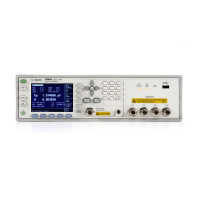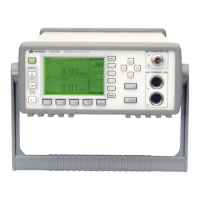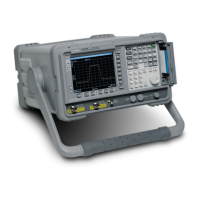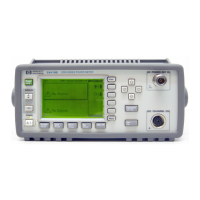E5071C
1058
• Peak nearest to the marker position on its left-hand side
• Peak nearest to the marker position on its right-hand side
Target (3 types)
• Peak nearest to the marker position
• Target nearest to the marker position on its left-hand side
• Target nearest to the marker position on its right-hand side
To select a search type, use the following command:
:CALC{1-36}:MARK{1-10}:FUNC:TYPE
Defining a Peak
You can define a peak by specifying the lower limit for the peak excursion
value and polarity (positive or negative peak).
To define a peak, use the following commands:
Lower limit for
the peak excursion value
:CALC{1-36}:MARK{1-10}:FUNC:PEXC
Polarity
:CALC{1-36}:MARK{1-10}:FUNC:PPOL
Defining a Target
You can define a target by specifying the target value (response value) and
transitional direction (positive or negative value change).
To define a target, use the following commands:
Target value
:CALC{1-36}:MARK{1-10}:FUNC:TARG
Transitional direction
:CALC{1-36}:MARK{1-10}:FUNC:TTR
Performing Marker Search
To perform Marker Search, use the following command:
:CALC{1-36}:MARK{1-10}:FUNC:EXEC
To turn On or Off the Search Tracking feature, which performs Marker
Search every time the trace is updated, use the following command:
:CALC{1-36}:MARK{1-10}:FUNC:TRAC
Retrieving Search Results
Performing Marker Search moves the marker to the points that matches
the search criteria, so you can obtain the search results by retrieving the
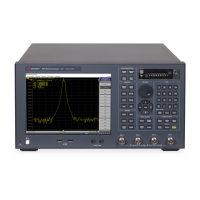
